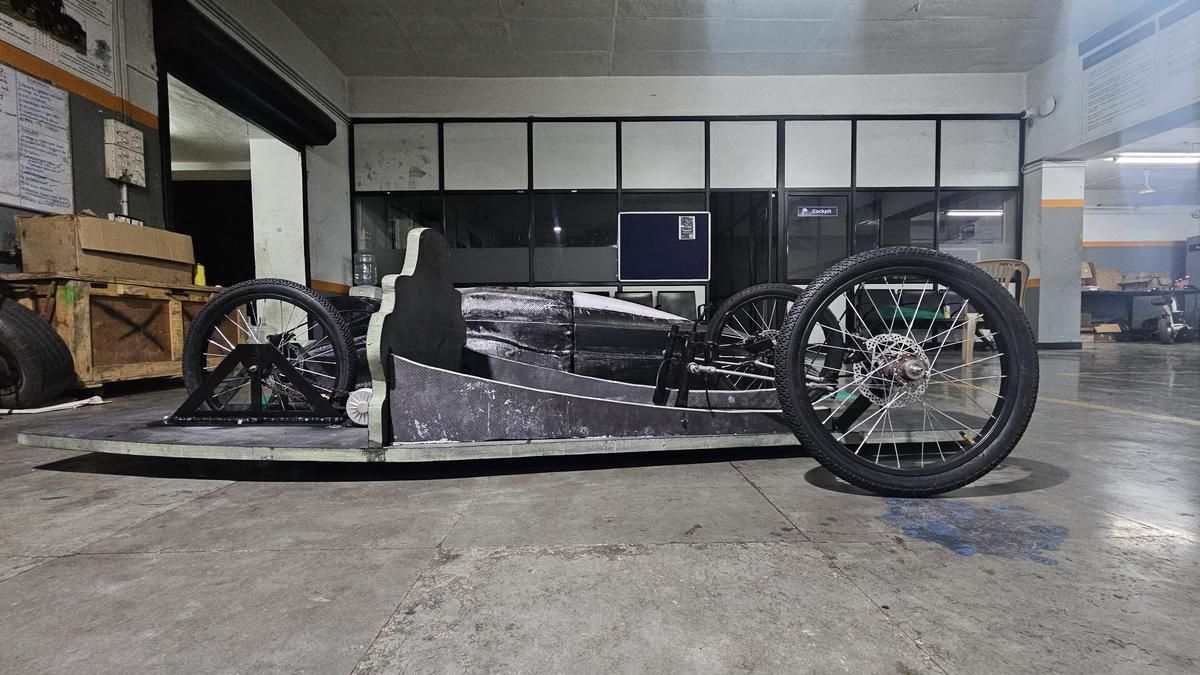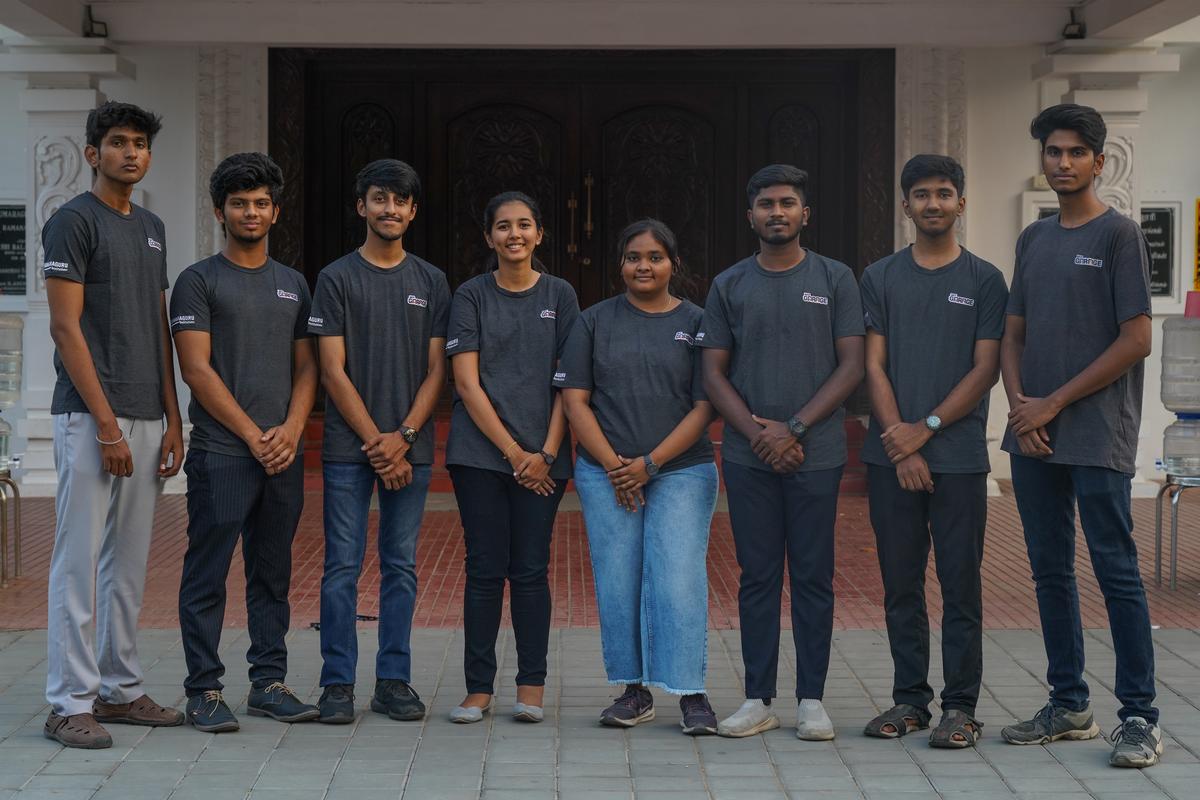On a shadowy Wednesday morning, we entered the tree-lined, serene campus of Kumaraguru Institutions in Coimbatore. The serenity of the area gave way to a different kind of energy as soon as we entered the KCT garage. Here, the music of machines was replaced by the singing of birds. The space was filled with tires, wheels, and dismembered vehicles, some in various stages of assembly, others apparently on the verge of dismantling.
The KCT garage is not a typical workshop. It is a student-led research center focused on product development and automotive innovation. It’s a place where students design and produce a wide range of vehicles, from off-road vehicles and formula cars to ATVs, dirt bikes, go-karts and even solar-powered go-karts.
However, on this particular Wednesday, all eyes in the garage were focused on one creation: the Team ReNew project. It is a sleek, black prototype of a dolphin-shaped vehicle powered by hydrogen fuel cells.

A vehicle powered by Team ReNew | hydrogen fuel cells Photo credit: Special Arrangement
The vehicle is being built for the Shell Eco-Marathon Asia Pacific competition. Founded 38 years ago as a cordial endurance event, it has evolved into a global event for sustainable automotive technology. Each year it attracts over 1,000 students from over 50 countries who share a common goal: to design, build and drive the most energy-efficient vehicles imaginable. This year’s Shell Eco-Marathon Asia Pacific will be held from July 2-6 at the Pertamina Mandalika International Circuit in Lombok, Indonesia.
The challenge is tough. Team ReNew (consisting of 10 undergraduate students) will be tested on the track, and their task will be to complete three laps of a demanding 4.3 km track – all in a strict time of 30 minutes. The winner will be determined based on one significant factor: the least amount of energy used. Team ReNew’s dolphin-shaped car is not only about speed; it’s about pushing the boundaries of efficiency and paving the way for a cleaner future.
Asvitha Rajesh, team manager, explains the design philosophy: “Our design is inspired by biomimicry, especially dolphins. Their unique aerodynamics made them the perfect model. We considered various options, including cheetahs and toucan beaks, but the dolphins came up with the optimal solution with minimal resistance. Using Computational Fluid Dynamics (CFD) software, we confirmed the low drag coefficient of our design, similar to the slender form of a dolphin.
Team captain Prathish Subu chimes in: “Our vehicle is about both performance and safety. We employ a lightweight, aerodynamic carbon fiber monocoque construction with strategically placed PVC foam to absorb impacts. This design provides an incredibly low drag coefficient.” This bio-inspired design showcases Team ReNew’s commitment to innovation and performance, making their creation a mighty contender for the Shell Eco-Marathon Asia Pacific.
Apart from Asvitha and Prathish, the team includes Uthith Narayanan G, Siyam Sundar CN, Pratheesh Hariharan C, Harini S, Vikkram LK and Dhanush Raj VM.

Odnowa Team | Photo credit: Special Arrangement
The team’s selection of hydrogen fuel cells is not just about winning the competition; it’s a statement about the future of transportation. Hydrogen has a triple advantage – it carries three times more energy per unit of mass compared to gasoline, it emits no harmful tailpipe emissions (only water vapor) and fits perfectly into global efforts to combat climate change.
According to the team, a gasoline-powered car traveling 200 kilometers will emit 50,000 grams of CO2, which contributes significantly to greenhouse gas emissions. Meanwhile, a hydrogen fuel cell vehicle would produce zero emissions over the same distance.
Muhsinul Islam, deputy manager of KCT Garage, highlights its contribution to the broader goal: “Our project addresses zero greenhouse gas emissions, which is a key Sustainable Development Goal (SDG). Transport is a major contributor to carbon emissions, and hydrogen fuel cells offer a promising solution. While this is currently costly for two-wheelers, our long-term goal (5-6 years) is to develop a cost-effective set of hydrogen fuel cells designed specifically for two-wheeled vehicles. This technology will meet the needs of a vast segment of the middle class and significantly reduce greenhouse gas emissions.”
However, the road to innovation was not without bumps. Maintaining a balance between research and the demands of building a intricate vehicle required enormous sacrifice. “The long working hours did not deter us. We would come after college, even on vacation, to meet deadlines,” says Asvitha.
Within eight months, Team ReNew had transformed from enthusiastic students into a well-oiled machine. There are still a few rounds of fine-tuning and final testing left before the team heads to Lombok, Indonesia. The challenge awaits, but Team ReNew is ready to leave a mark, leaving not only tire tracks but also hope for a sustainable future.









